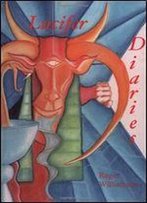
The Representation Of Women's Emotions In Medieval And Early Modern Culture
by Lisa Perfetti /
2005 / English / PDF
1.2 MB Download
This collection investigates the social and cultural factors
that shaped the representation of women’s emotions in the
medieval and early modern periods and explores the consequences
of this representation for women’s participation in public and
private life. The essays focus on emotions such as sorrow, joy,
love, anger, and shame as depicted in a range of texts,
including devotional literature, drama, chanson de geste,
lyric, theological treatises, and legal texts.
This collection investigates the social and cultural factors
that shaped the representation of women’s emotions in the
medieval and early modern periods and explores the consequences
of this representation for women’s participation in public and
private life. The essays focus on emotions such as sorrow, joy,
love, anger, and shame as depicted in a range of texts,
including devotional literature, drama, chanson de geste,
lyric, theological treatises, and legal texts.
As a central component of human behavior and social
interaction, emotion is a fundamental catagory of analysis for
understanding cultures of the past. Teachers and scholars of
medieval history, religion, and literature will find the
questions raised by these essays to be of great value in
guiding students to understand medieval culture on its own
terms while appreciating the ways in which it continues to
influence us today.
As a central component of human behavior and social
interaction, emotion is a fundamental catagory of analysis for
understanding cultures of the past. Teachers and scholars of
medieval history, religion, and literature will find the
questions raised by these essays to be of great value in
guiding students to understand medieval culture on its own
terms while appreciating the ways in which it continues to
influence us today.
An introduction synthesizes the findings of the
individual essays, demonstrating how the representation of
women’s emotions is rooted in the medieval understanding of
female embodiment, which means that emotions are virtually
coded as sexual when they apply to women, although class and
ethnicity are important factors that are shown to work in
conjunction with gender in how emotions are represented. The
introduction also lays out several helpful theoretical models
of emotion used by anthropologists, psychologists, and social
historians.
An introduction synthesizes the findings of the
individual essays, demonstrating how the representation of
women’s emotions is rooted in the medieval understanding of
female embodiment, which means that emotions are virtually
coded as sexual when they apply to women, although class and
ethnicity are important factors that are shown to work in
conjunction with gender in how emotions are represented. The
introduction also lays out several helpful theoretical models
of emotion used by anthropologists, psychologists, and social
historians.











